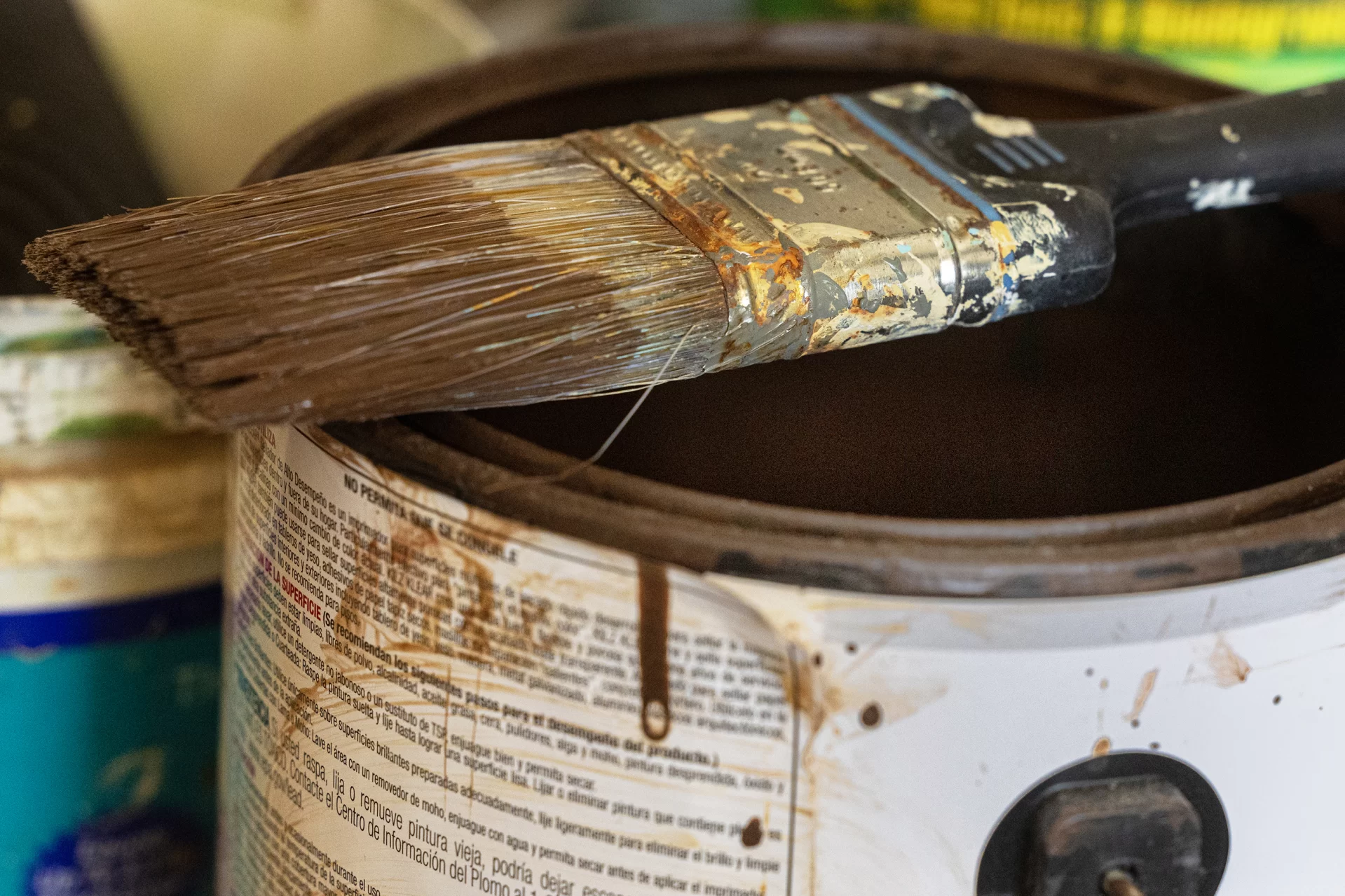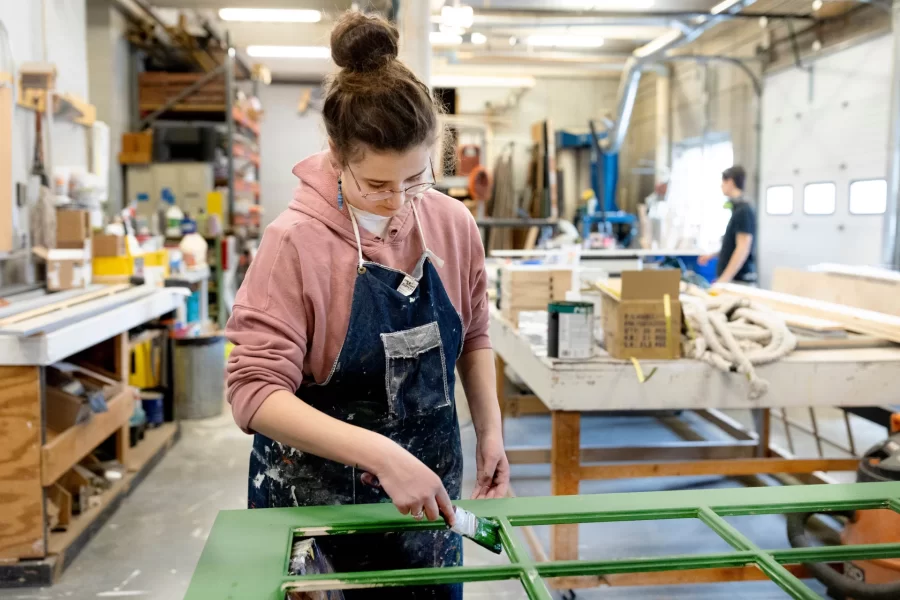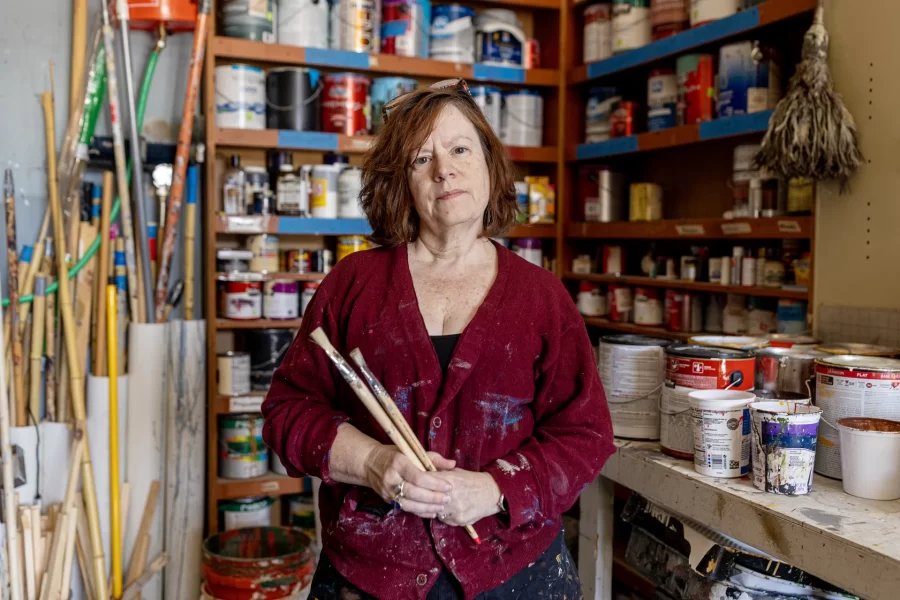
Each spring, Bates greens up, both the campus and its sustainability efforts.
One sign: the annual announcement of Green Innovation Grants, which award up to $10,000 to fund creative solutions proposed by Bates students, faculty, and staff to address campus sustainability challenges.
“We crowdsource a lot of good sustainability ideas from people who work on campus and walk around campus every day,” says Assistant Director of Sustainability Tom Twist. “The idea is to really empower students and staff and faculty to have control over the sustainability of their own campus.”

This year’s Green Innovation Grants will fund:
- A paint-waste mitigation system for Schaeffer Theatre, proposed by Associate Professor of Theater Christine McDowell, Costume Director Rebecca Armstrong, Technical Director Justin Moriarty, and Associate Professor of Theater Courtney Smith;
- More tools and bikes for the Bates Green Bike bicycle exchange program, proposed by Erik Lindholm ’27 and Sam Child ’25;
- Additional compost bins for campus and educational programming about composting, proposed by Maddie Weinstein ’27, Caroline Mayer ’26, and Sarah Smith ’26;
- The Bates Reuse Hub, through which students can easily donate their used items to other students, proposed by Anna Cole ’25 and Vyshu Viju ’26;
- A permanent fence for the Bates Garden to keep out woodchucks, deer, and other veggie-eating wildlife, proposed by Nimco Jama ’25 and Deven Thapaliya ’25.
Over the years, projects initially funded as pilot programs under the Green Innovation program have become baked into the college’s sustainability efforts, “which is great,” Twist says.
The student-run Bates Garden, affectionately known as the PLOT, and the stainless steel cups that Dining Services distributes to students in lieu of disposable coffee cups both originated as Green Innovation Grant initiatives.
Likewise, staff and faculty from the Department of Theater and Dance hope that their Green Innovation Grant initiative will inspire more sustainable paint practices both within their department and around campus.
“This opportunity really prompted us to examine our practices, and encouraged us to seek out actively responsible solutions to processes we weren’t previously addressing,” McDowell says. “I’m so excited to make these modest, but, I believe, long-ranging changes to our painting systems, and to educate students as to their own uses of latex paint and its environmental impacts.”
As an inherently fleeting art form, theater presents unique sustainability questions. Without careful attention, costumes and props easily become one-hit wonders, stars for a week before being relegated to storage or the waste stream.
At Bates, theater faculty and staff prioritize the reuse of materials. “We produce things with the goal of saving as much as we can possibly save so that we can reuse it mindfully,” says McDowell.
With their 2025 Green Innovation Grant initiative, Bates theater will be able to use latex paint for theater sets more efficiently.

“Latex paint has been around a long time, and there have been lots of innovations on how to mitigate the impact it has on the environment,” Armstrong says. “We know we’re going to be using it. So we want to make sure that we’re using it in the most responsible ways that we can.”
As multiple painters tackle a set-design project, working with disposable paint trays and perhaps pouring more paint than they can use up in one sitting, waste can quickly accumulate.
“We’re an incredibly active department,” Armstrong says. “There’s almost always something going on: student productions, dance productions, guest speakers, guest performance pieces. We need to be just as active in our sustainability efforts.”
With the funds, the theater team will buy a dozen Repaint Studio paint trays to replace disposable paint trays. The trays come with silicone liners and lids that can preserve unused paint for up to two weeks, allowing painters to begin, pause, and resume projects without wasting already-poured paint.

The silicone liners allow users to peel dried paint off the silicone and throw it away, instead of washing it down the drain.
Still, paint brushes need to be cleaned, and here, the department will rework its system for organizing and cleaning brushes to maximize efficiency and limit the amount of paint entering the sink. At the same time, they will install a solids collection unit to divert paint solids from the general water stream.
“Think of it like the garbage disposal in your kitchen,” Armstrong says. “It’s trapping the sediment so that it doesn’t go into the water further down the stream.”
Theater faculty and staff hope that their sustainable changes will inspire similar efforts around campus. While working on shows and taking theater courses — including the Short Term scenic arts course planned for next spring — students will be exposed to sustainable practices and different ways of thinking about waste simply by using new tools and systems, Armstrong says.

“It’s just about being more mindful about the entire life cycle of the project and the paint and the supplies,” Armstrong says.
Additionally, the changes to sustainable paint management in the theater could influence similar adjustments to departments around campus that use paint, such as Facility Services and the Department of Art and Visual Culture Department, say Armstrong and McDowell.
Every incremental effort to improve sustainability, no matter how small, can make a positive impact and help Bates reach its sustainability goals.
“Every time you use something, there’s some environmental trade-off somewhere,” McDowell says. “I do like to think about that.”




